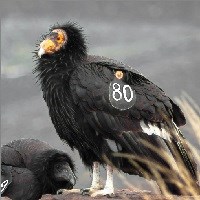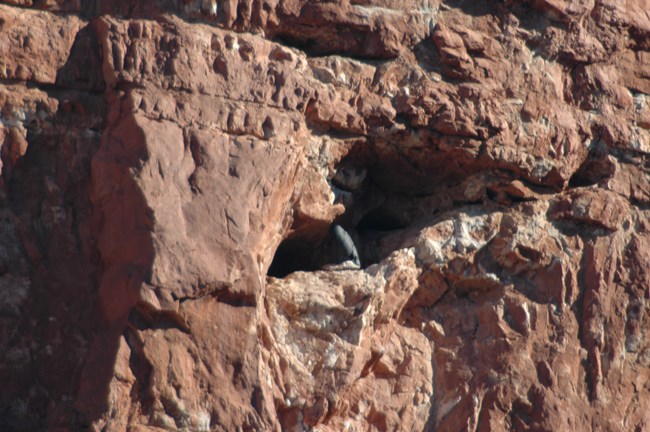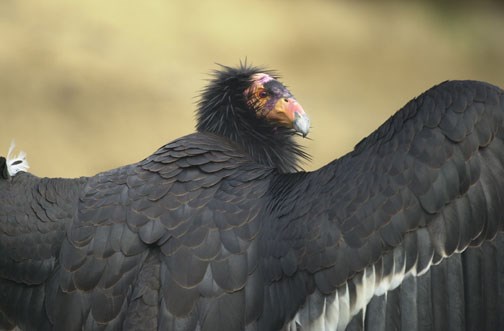Last updated: February 1, 2017
Article
California Condor

NPS Photo/ Don Sutherland
The California condor (Gymnogyps californianus) is a federally endangered bird that was rescued from extinction by intensive human efforts, it now breeds in the southwest such as Arizona, Utah, and California. Considered one of the rarest birds in the world, it is the largest land bird in North America with a wingspan up to 9 1/2 feet and weighing up to 23 pounds.

NPS Photo
Identification
- California condors have a wingspan of 9.5 feet (3 meters)- at least 2 feet longer than the next largest bird in the region (the golden eagle).
- Adults are primarily black, but have a brilliant white triangle under each wing and a red or orange head.
- Juveniles (less than six years old) are almost entirely black, with dark heads and mottled grey plumage on the underside of each wing.
- Most have obvious number tags on one or both wings identifying the individual.
- Condors hold their wings directly to the side as they fly. Turkey vultures, which are commonly mistaken for condors, hold their wings in a slight "V" as they fly, with the wingtips pointing slightly upwards.

NPS Photo
Habitat
- There are currently 3 wild populations of condors: Arizona/Utah, California, and Baja California.
- Condors nest and roost on ledges and caves in cliff faces. This protects them from predators on the ground.
- Condors do not have territories and travel daily, often roosting in a different place each night. They usually will not return to the same place on a regular basis unless they have a nest with an egg or chick.

NPS Photo
Behavior
- Condors are scavengers. They exclusively eat dead large mammals such as elk, mule deer, bighorn sheep, and cows.
- Unlike vultures, which use their sense of smell to find food, condors use their vision.
- Condors can fly hundreds of miles per day searching for food, using thermal updrafts and their aerodynamic bodies to conserve energy and fly very efficiently.
- Condors become sexually mature at 6 years of age, but often will not find a mate until they are several years older. Once they do, they often mate for life. Condors lay 1 egg at a time, and chicks are dependent on their parents for a year and a half. This means that condors reproduce very slowly- at most they can have 1 offspring every other year.
- California condors can live into their 60s. The oldest condors in the Arizona/Utah flock hatched in 1995.
Tags
- bryce canyon national park
- cedar breaks national monument
- glen canyon national recreation area
- grand canyon national park
- grand canyon-parashant national monument
- pinnacles national park
- redwood national and state parks
- sequoia & kings canyon national parks
- zion national park
- california condor
- vultures
- raptors
- birds
- avifauna
- wildlife
- species
- american southwest
- at-risk biota
- threatened and endangered species
